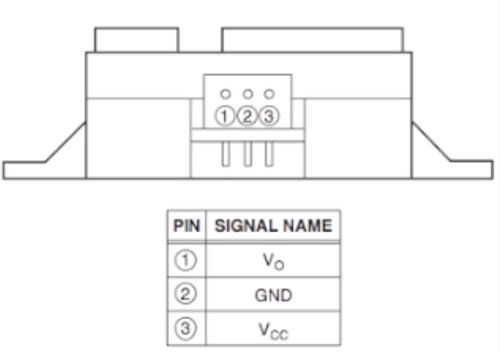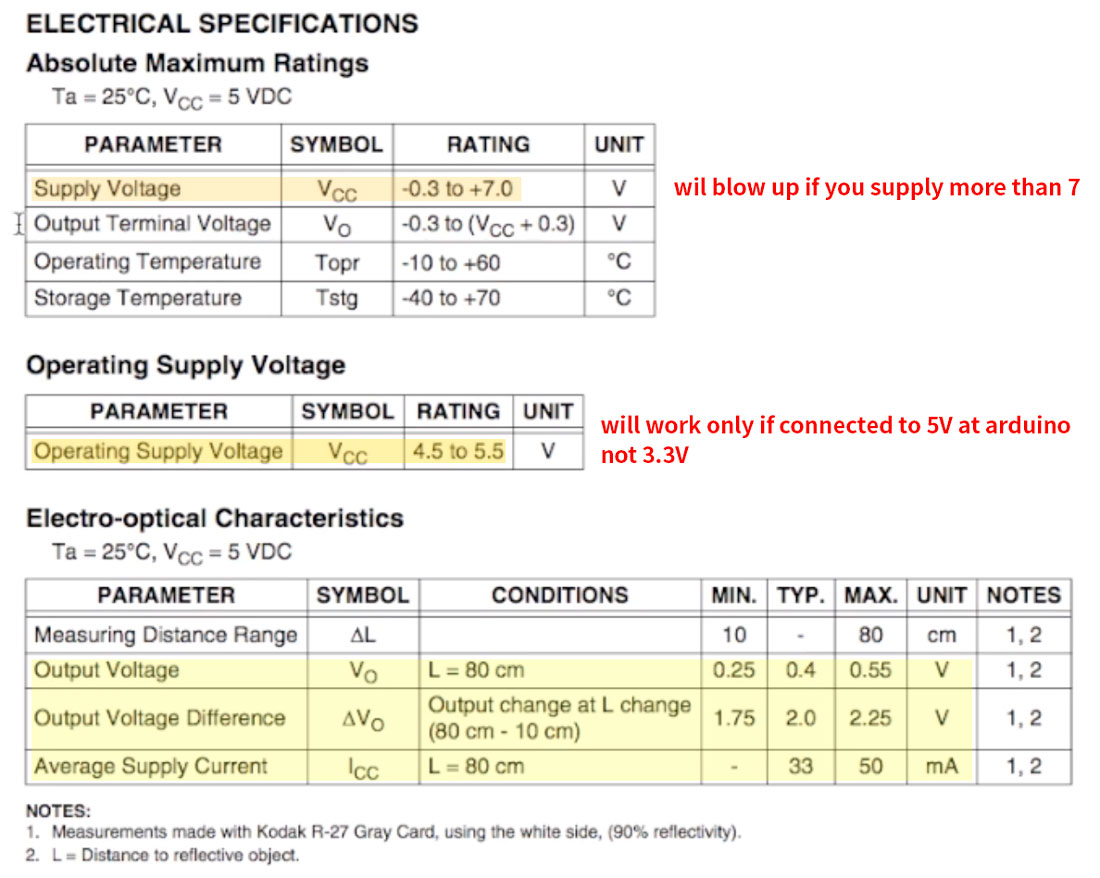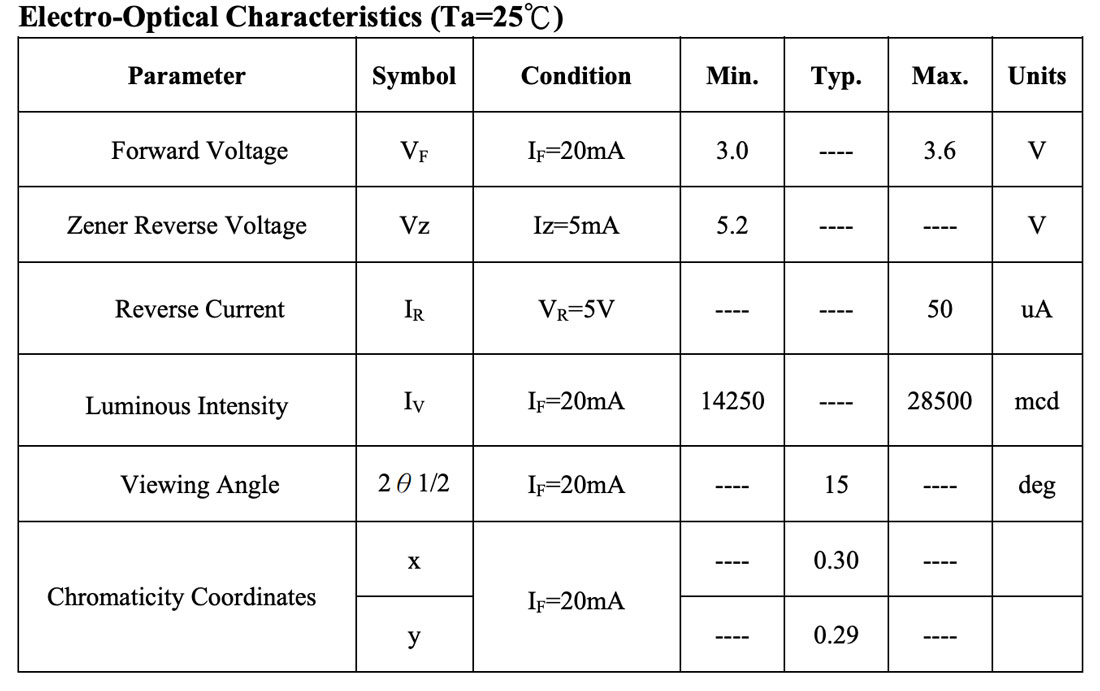Intro to Phy Comp 5
Sensors interfacing
There are three different kinds of interfaces. 1) Analogue input, 2) Pulse width – which is stable than analog input, and 3) Serial – which has its own controller built in the sensor

Reading datasheet
Things must-see when checking out the datasheet
- Pinout

2. Electrical specifications
- Supply voltage
- Operating supply voltage
Previously when playing with the distance sensor, it didn’t work with 3.3V. - Still, difficult to understand dealing with “output voltage, output voltage difference, average supply current” and how to modify them in Arduino.
How can I read this? –>
Arduino current specs
Arduino Uno and Nano current output limit is (link)
- Uno: 1A
- Nano: 500mA
- Max per input/ output: 40 mA
- Sum of currents out of all input/ output pins combined: 200mA
FROM ‘Making Interactive Art: Set the Stage, Then Shut Up and Listen‘
“If you’re thinking of an interactive artwork, don’t think of it like a finished painting or sculpture. Think of it more as a performance. Your audience completes the work through what they do when they see what you’ve made. Figure out how to suggest to them what their course of action could be, and how they might uncover their story and their own emotional interpretation of the work.”




